Leaders and Heroes
Henry Box Brown (c. 1815 - June 15, 1897)
Henry Box Brown was a notable American author, speaker and showman who lived in the mid 1800’s. A Black man, Brown was born into slavery in Virginia. In 1849, at age 33, he mailed himself in a wooden crate to a Quaker merchant in Philadelphia. Brown spent the next year as a speaker for the Anti-Slavery Society, touring much of the northeastern United States. He also published the first version of his autobiography, Narrative of the Life of Henry Box Brown, written by Himself. The first version of his autobiography adhered to the standard slave narrative genre that was popular with white U.S. abolitionists and sympathizers at the time.
Special Collections' copy of this edition is one of two documented copies to survive.
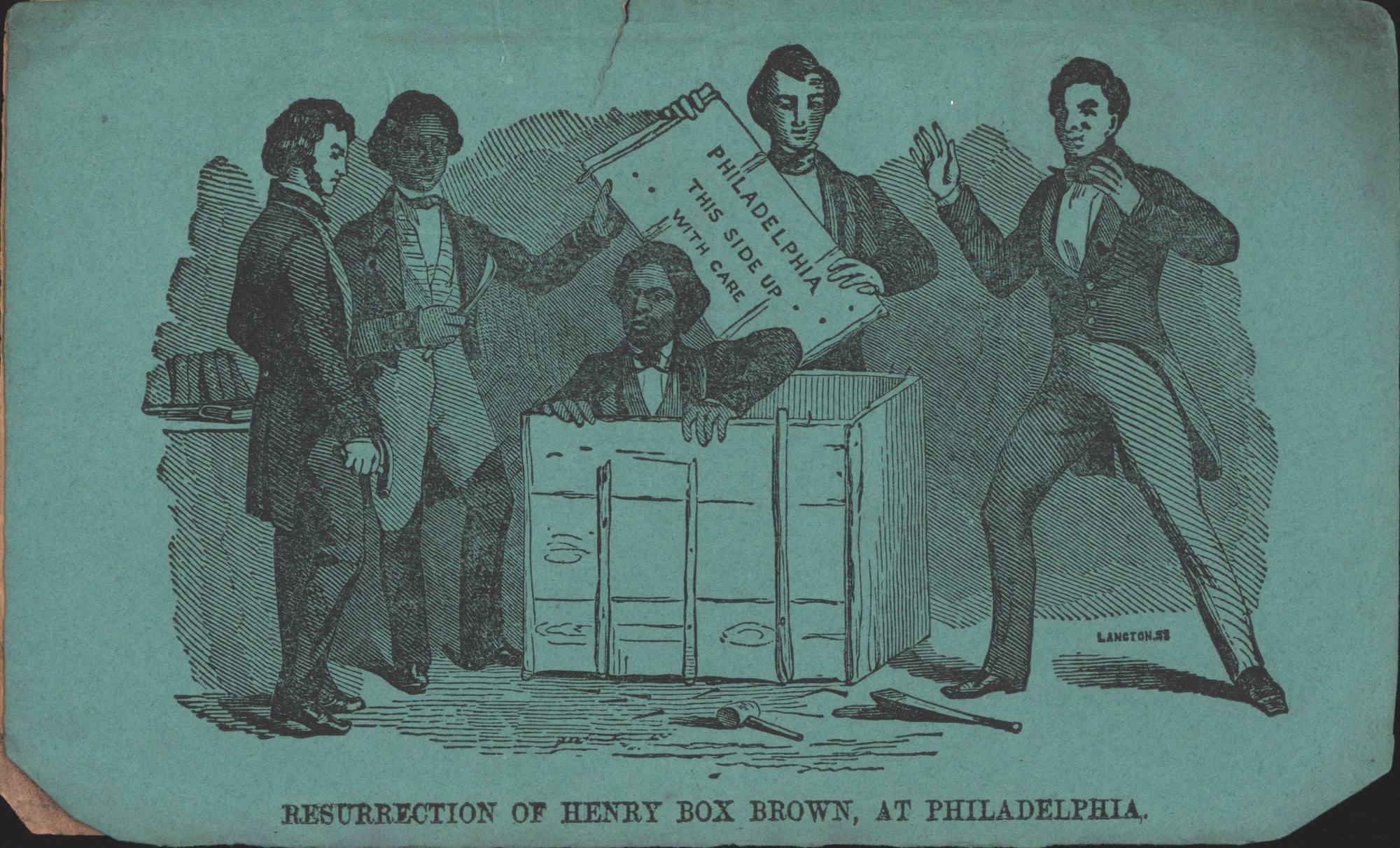
Engraving; Brown, Henry Box, 1815 or 1816-. Narrative of the life of Henry Box Brown, written by Himself. Manchester: Printed by Lee and Glynn, 1851. E450 .B76 1851
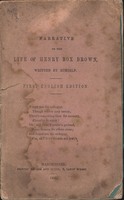
Cover; Brown, Henry Box, 1815 or 1816-. Narrative of the life of Henry Box Brown, written by Himself. Manchester: Printed by Lee and Glynn, 1851. E450 .B76 1851
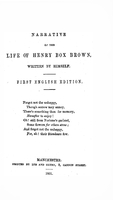
Title page; Brown, Henry Box, 1815 or 1816-. Narrative of the life of Henry Box Brown, written by Himself. Manchester: Printed by Lee and Glynn, 1851. E450 .B76 1851
Slave narratives are an important component of re-constructing the experience of so many people who were devalued and dehumanized based on their skin color. The narrative often explores slavery as hell on earth. The genre features eye-witness accounts of the cruel daily life in slavery, with a personal crisis driving the ultimate escape. The writer or narrator has an expressed faith in God, and a commitment to human dignity modeled after the Constitution. The narrative reflects the national myth of American individuality and freedom, striving for “life, liberty, and the pursuit of happiness.” The narrator is typically male, with the majority of Black female slave narratives published after the 1860’s. The narrative does not conclude with arrival in “free” states, but with a re-dedication of the self through naming and avowal to anti-slavery activism. In his personal narrative, Brown recommends that slaves be allowed to vote, a new president should be elected, and that the North should hold the South accountable.
During his time as a speaker in the United States, Brown was nicknamed Box for his unique method of escape. Brown then embraced "Box" as his own. Unfortunately many other mail-in attempts at escape to freedom ended in disaster for the Black abolitionists and the enslaved people who attempted it after Brown's success. After the passage of the 1850 Fugitive Slave Law, Brown emigrated to England to remain safe from law enforcement and slave hunters. Brown continued work as an antislavery speaker, touring England for several years. After the start of the American Civil War, he worked as a showman and mesmerist to continue to support himself and his family.
Special Collections holds the first English printing of the pamphlet, available fully digitized. Attached to the pamphlet is an engraving called The resurrection of Henry Box Brown, at Philadelphia. The engraving is a copy of the original lithograph by Samuel Rowse, which had been circulated in America to raise funds for Brown’s work.
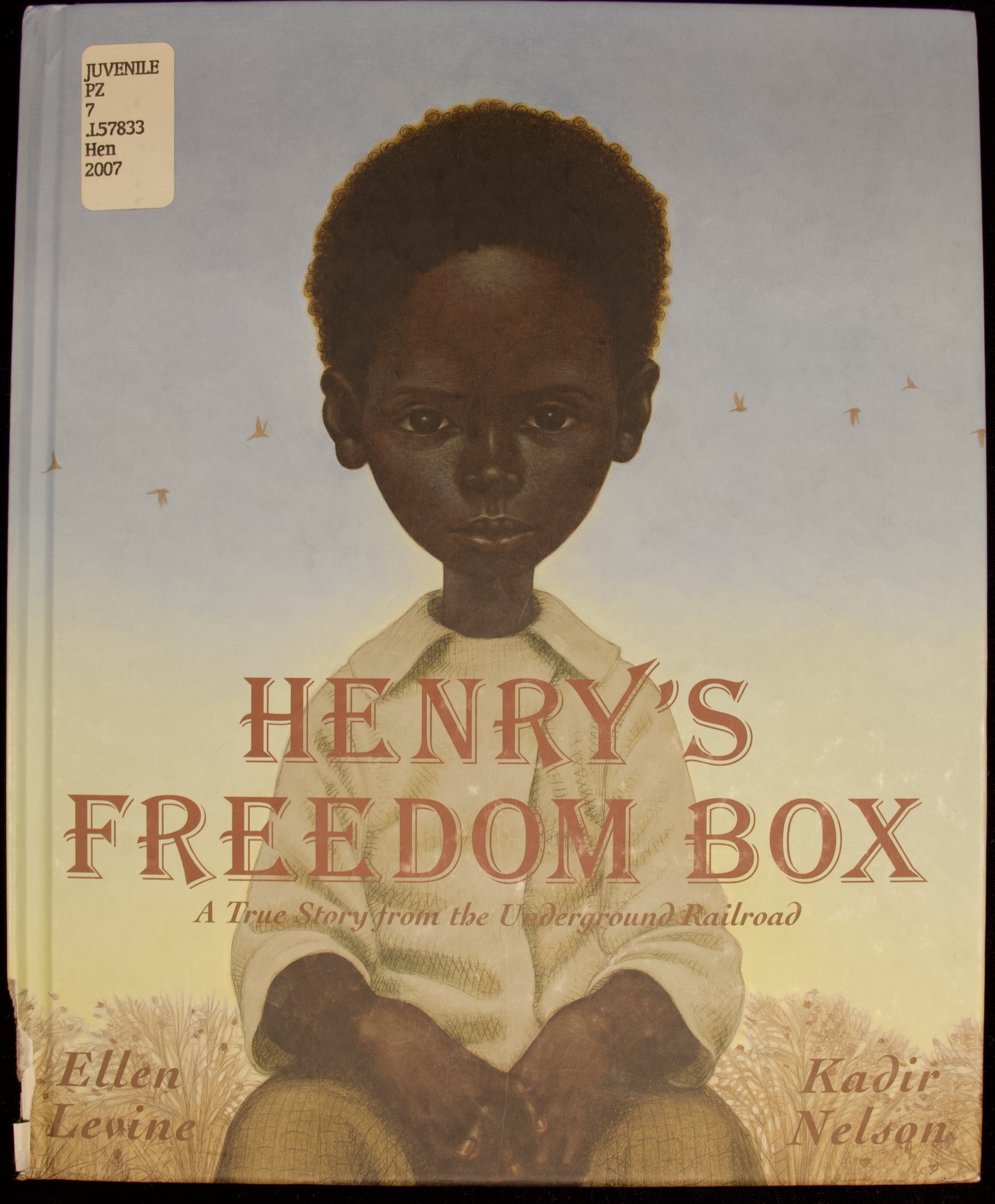
Cover; Levine, Ellen. Henry's freedom box / by Ellen Levine ; illustrated by Kadir Nelson. New York: Scholastic Press, 2007. PZ7.L57833 Hen 2007
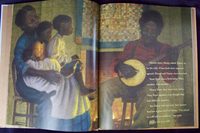
Illustration; Levine, Ellen. Henry's freedom box / by Ellen Levine ; illustrated by Kadir Nelson. New York: Scholastic Press, 2007. PZ7.L57833 Hen 2007
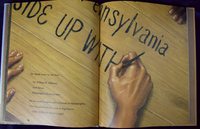
Illustration; Levine, Ellen. Henry's freedom box / by Ellen Levine ; illustrated by Kadir Nelson. New York: Scholastic Press, 2007. PZ7.L57833 Hen 2007
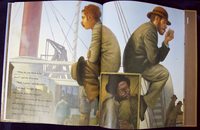
Illustration; Levine, Ellen. Henry's freedom box / by Ellen Levine ; illustrated by Kadir Nelson. New York: Scholastic Press, 2007. PZ7.L57833 Hen 2007
The second featured item is a children's book. The approach to a heartbreaking topic is delicate, and the reader is taken on the emotional rollercoaster of Brown's journey to escape. The beautiful illustrations and glossy pages makes this book an approachable read. In particular, the scene depicting the actual journey in the box adds some humor while addressing the unique escape.